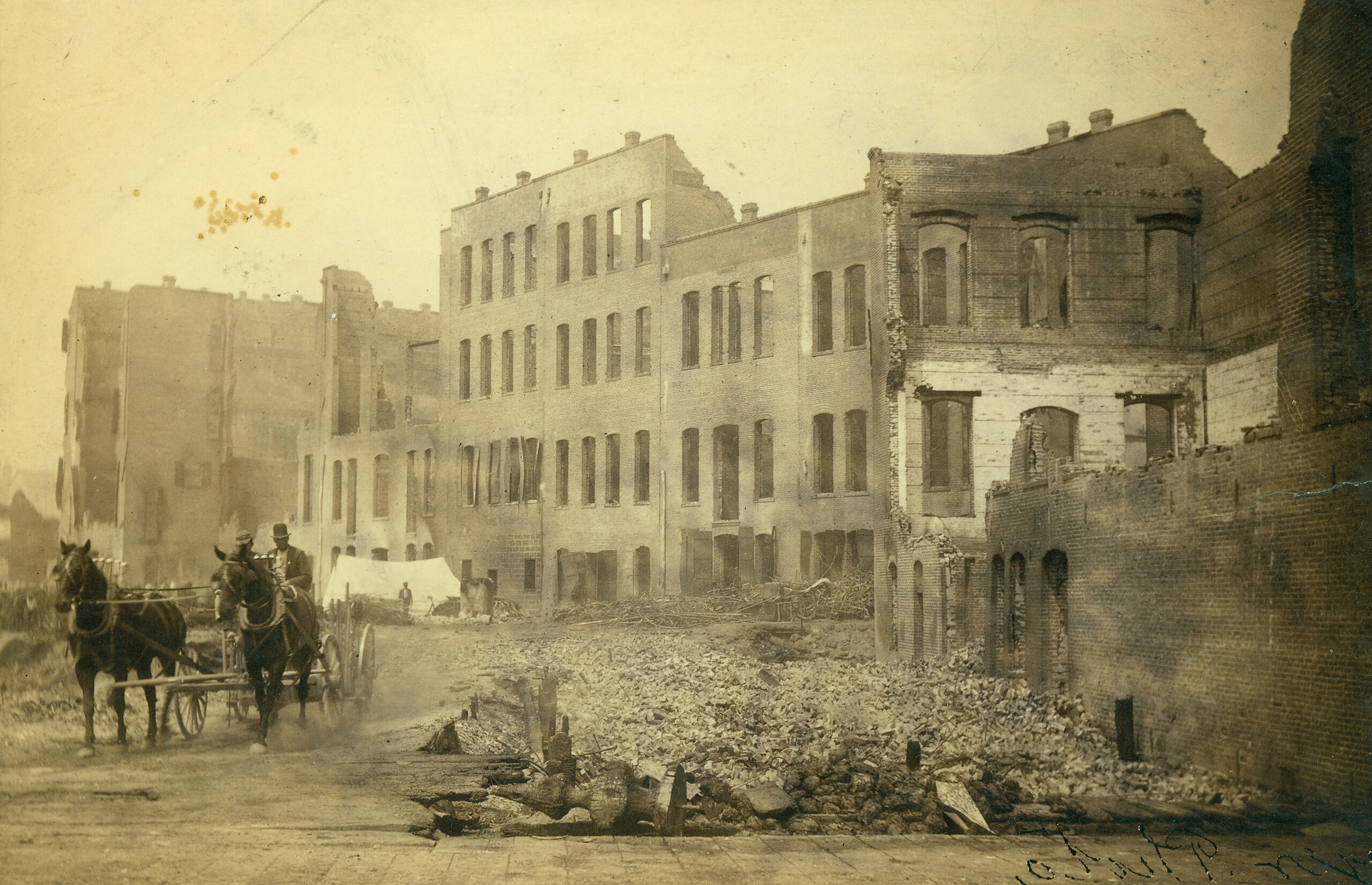
06 Jun On This Day In History: Great Seattle Fire Leaves 25 City Blocks In Ruins
During the particularly dry summer of 1889, fires ravaged the northwest part of the U.S. Runaway flames damaged Spokane, Vancouver, and Seattle—all major cities in the Washington Territory. One of these blazes was the most destructive in the Emerald City’s history.
The Great Seattle Fire destroyed 25 city blocks of Seattle’s waterfront in less than a day. In a city built on the logging industry, both metaphorically and figuratively, it didn’t take long for the affordable but combustible timber structures constructed on wood stilts that made up the entire Seattle business district, which was equivalent to 120 acres, to be consumed by fire.
Around 2:20 p.m. on June 6th a 24-year-old Swedish carpenter named John Black was working at Clairmont and Company Cabinet Shop when he accidentally let a pot of hot glue run over onto the floor which was covered in woodchips and turpentine. This started a small fire. Black tried to douse the fire with water, but it only accelerated the blaze.
Fed by the carpentry shop’s timber structure, the fire moved rapidly destroying an entire block in no time. The blaze went into overdrive when it encountered a liquor store and wood boardwalks that connected the town. Although the fire department, which was a volunteer unit, arrived quickly, fire hydrants were not only sparse but connected via wooden pipes. Additionally, the city’s wood buildings and docks made the fire’s work easy. The silver lining of the fire is that no one was killed unless you count the one million rodents who perished.
Rather than becoming a reversal of fortune for the burgeoning seaside city, the citizens of Seattle quickly rebuilt with innovation in mind. Several progressive improvements in the arena of fire and life safety were implemented. “During the rebuilding process business owners turned to brick and stone rather than wood to reconstruct their buildings. They also implemented division walls between buildings,” explains TERPconsulting’s Rob Sontag, CFPS, who has served on various National Fire Protection Association (NFPA) code and standard committees. “Another innovation that resulted from the Great Seattle Fire was the establishment of the Seattle Fire Department in October 1889, replacing the all-volunteer regimen. Additionally, the city’s leaders added more fire hydrants, eliminated the use of wood pipes, and increased the size of the pipes.”
However, the post-fire reconstruction and innovation of Seattle were not without oddities. The merchants who made up the city’s business district quickly reconstructed their shops and saloons where they had originally stood. However, the eager merchants might have gotten ahead of themselves because by the time the shops were rebuilt, the city had finally made the necessary preparations for a new set of streets and built them on top of the just resurrected establishments.
The enthusiastic merchants were not to be deterred and they quickly built brand-new shops on the newly built streets, which in turn created two levels of shops. Once the second level was completed the first level was still doing business as usual so it was decided both levels would remain open. As far as the awkward issue of how to enter the ground-level shops, ladders were placed on street corners for access. Of course, 20- to 40-foot-deep holes at every street corner could be problematic after a “night on the town” and, in turn, 17 involuntary suicides occurred.
By the time the Gold Rush hit the Emerald City a few years later, Seattle’s infamous underground had attracted a skid row of vagrants, alcoholics, drug addicts, and prostitutes that would later become a breeding ground for the bubonic plague of 1907. This led the city to officially close the underground tunnels and abandoned rooms.
Many decades later it was named a historic district and today this area of Seattle is known as Pioneer Square. If you are interested in delving deeper into the quirky and inventive history behind the Great Seattle Fire, the next time you visit the Emerald City you can take an Underground Tour detailing the post-fire construction that lies beneath this curious neighborhood.
Top photo credit: Boyd and Braas
Middle photo credit: Frank LaRoche
Bottom photo credit: John P. Soule






No Comments